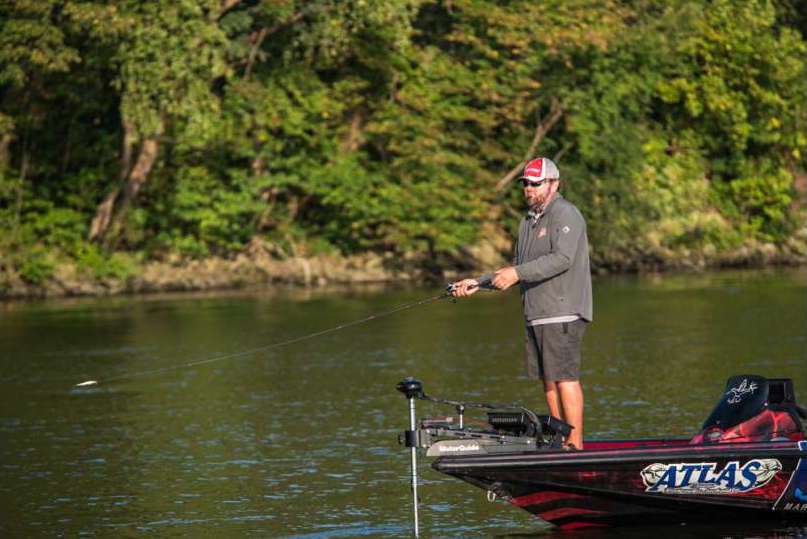
It’s July. I know. In some places the fish have been out in their summer haunts for some time. In other places, though, they’re just starting to move away from where they spawned. Either way a review of summer patterns is worth the time it takes. It’s one of the ways good anglers stay good, and it’s one of the ways beginners catch bass.
When I think about summer bass fishing I put lakes and reservoirs into one group, rivers into another. If the place you fish has a little of both — like a lot of our rivers that have been damed and turned into reservoirs — apply what I’m saying to where you’re fishing on the reservoir.
In northern states where the movement is just now starting to happen the move out will go quickly once it starts. The water’s already warm so they won’t have to wait for anything. Once they finish their spawn it’ll take less than a week for them to get out to deep water.
As soon as they’re out there look for them in schools on ledges, drops and channels. In some clear lakes they’ll hold in weedbeds as deep as 25 or 30 feet. Local knowledge is a definite plus here.
A smaller number of them will stay shallow, however. Mostly, you’ll find those bass pushed back, deep into cover. It might be weeds, twisted and thick wood or docks. Regardless, they’ll most likely be way in the back. The only exception I know of is when the cloud cover is heavy or at night. They’ll move out to feed at those times.
Hot weather bass (largemouth) don’t roam much. They tend to find a place they like and wear it out. You should do the same.
Rivers work a little different. Their water starts falling when summer arrives. In most cases that moves the fish out of the creeks and into the main river where there’s more safe water. If they’re in a long, deep creek, they’ll probably stay there but even then they’ll move away from the bank and out of the backwaters. You’ll usually find them in the deepest part of the channel.
The other thing about river bass in the summer is that they like current, even though they might spend most of their time behind something that breaks it. Find a stretch of water with current and breaks and you’ll find bass.
When bass are in their summer haunts their forage base changes. Crayfish, which provide a huge portion of their diet in the spring, are starting to be less active. They’re staying in their holes longer during the day and spending less time roaming around even at night. As a result bass are turning their attention towards other things.
That usually means shad and bluegill. However, in some waters it’ll be blueback herring and crappie. In the Great Lakes look for gobies. Look around before you make a lure selection and then try to mimic the local forage. Find something that looks like what they’re eating.
I know that most of what I’ve said in this column is basic. But that doesn’t mean it’s not important. Sometimes we all have to remind ourselves to start at the beginning, no matter our level of experience or expertise.

